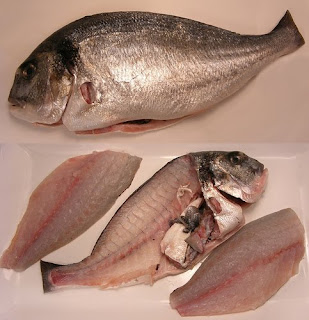Wild Edibles Seafood Update
Good morning Chefs and Buyers,
Wild striped bass landings are very poor right now. Very few areas are open to commercial fishing and the outlook for more fish is likely to be bad until July when New York opens around the 7th and Massachusetts the 12th. We suggest corvina and grouper as substitutes for the time being. Corvina is from the Pacific and has many of the same qualities of our wild striped bass while being perhaps a bit firmer. We sell corvina already headed and gutted, so the yield and finished price is very reasonable. Grouper is coming out of the Gulf, both from Florida and Mexico and the fish are all crisp and clean.
Snappers are all looking super today. We have American reds available with candy gills sizes 1-2, 2-4, 4-6 lbs each. Also available are big mutton snappers 6-10lbs each and they are at a lower price point. The meat cuts a little darker than other snappers, but cooks up very similar.
Wild salmon prices are down on both Kings and Sockeyes making them a good choice for the weekend. Wild salmon is a great selling point with patrons and consumers. The average person might not know or care about seafood sustainability, but they are likely to recognize the premium value and inherent goodness of wild salmon on the menu.
Tuna is in good supply and we have new arrivals daily on big yellowfin from Ecuador and Costa Rica. Prices are lower on all grades today.
Todays featured oyster is the Canada Cup: A round, 3 to 3 ½ inch medium choice, wild harvested oyster from Prince Edward Island. The consistent size and well-formed cups define this oyster. A moderately salty flavor with a very firm meat; definitely a must have on your raw bar menu. Availability is typically strong from Spring until early Winter.
We also have Barramundi, farmed stripe bass, dayboat cod, hiramasa (Pacific yellowtail), porgies, and arctic char.
Karl Kraus
Have a great day,
Matthew Hovey http://www.linkedin.com/in/matthewhovey
718-433-4321 ext.121 / fax 718-433-4616
"Hand picked specialties from the Seas"
www.wildedibles.com
http://sustainablefishmonger.com


Comments